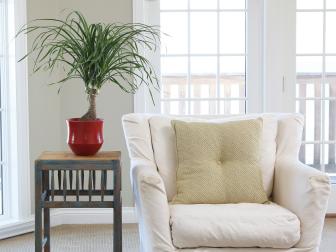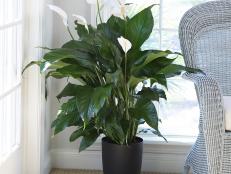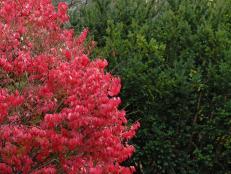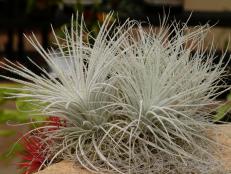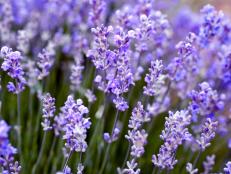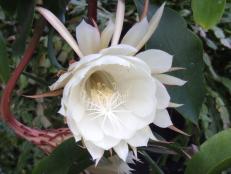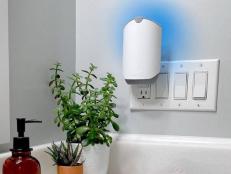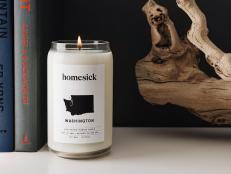Bamboo Plant: Get to Know It Before You Grow It
Learn why bamboo plant is either loved or hated, plus how it's used and how to care for the popular houseplant called "lucky bamboo."
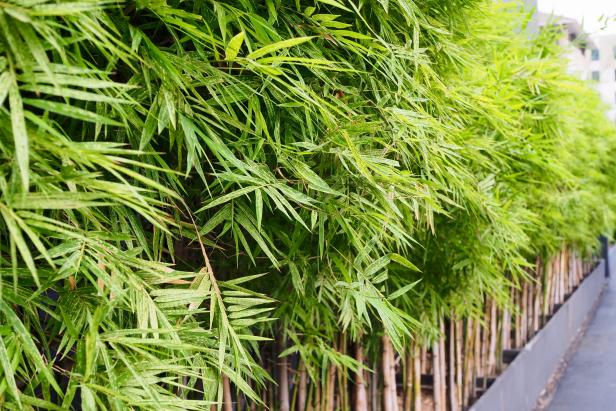
Shutterstock/Joe Chakgree

Mention "bamboo" among gardeners and you’ll likely find there’s no middle ground: People either love it or loathe it.
Bamboo can grow quickly into a tall, dense grove that provides welcome privacy with a touch of the exotic for a backyard retreat. Left untended, some bamboo species can creep across the lawn, into flower beds and up through cracks in concrete in less time than you’d expect. For some gardeners, "invasive" is too mild a term. "Monstrous" more aptly describes bamboo's wayward habits. Here are some facts; you can decide which side you’re on.
What Is Bamboo?
Technically, bamboo is a very tall, very big grass with large, woody stems — called culms — divided into sections by nodes. They spread by tough underground stems, or rhizomes.
The two types of bamboo are defined by the growth habits of their rhizomes:
- Clumping bamboo is fairly well-mannered. Its rhizomes grow in an enlarging circle but stay close to the parent plant, so the spread is steady but slow.
- Running bamboo is the type that gives bamboo its bad reputation because of its habit of quickly spreading its woody rhizomes out and away from the parent plant, sending its shoots up through lawns and garden beds.
A running rhizome can spread indefinitely — only a heavy physical barrier and some ravenous pandas can slow their growth.
On the other hand, the politely clumping varieties have taken a bad rap for their over-zealous relatives. With compact rhizomes that stay put, these desirable bamboos don’t spread out of control or need containment.
How Bamboo Is Used
Dwarf varieties can be used as groundcover — some grow to only a foot or two — and can help stabilize areas subject to erosion. They can also be grown in containers. Don’t be fooled by its short stature, though. Unless you provide a barrier at planting time (we talk about this later), this one can also quickly run out of bounds.
The tall varieties — culms that grow to 20 feet or more — are what you want to create an effective screen, and homeowners can use its leafy foliage to separate themselves from their neighbors. It can also be a sound barrier, muffling street noise.
Giant timber species, which can grow 40 to 50 feet tall or taller, with 4-inch-diameter culms, are the varieties chosen for building and construction. The use of bamboo as a flooring material, for example, is seen as a viable, renewable-resource option to hardwood. In a suitably sized landscape, these massive grasses can be awe-inspiring, but their rampant growth must also be reined in.
What About Lucky Bamboo?
The first thing you need to know about lucky bamboo is that it’s not bamboo at all, but a plant in the genus Dracaena (specifically, D. Sanderiana), trained and shaped into its customary bamboo-like appearance. Its close kin includes two other popular houseplants: corn plant and Madagascar dragon tree.
These are relatively low-maintenance houseplants that can grow in water. Use filtered water or tap water that has been set out for several hours to allow chlorine, which is harmful to Dracaena, to escape. Change the water every week or so. Lucky bamboo can also grow in soil.
Keep lucky bamboo out of direct light and away from extreme heat or cold, and feed it every couple of months with a diluted solution of plant food — plant care specialists suggest about 1/10 the recommended strength.
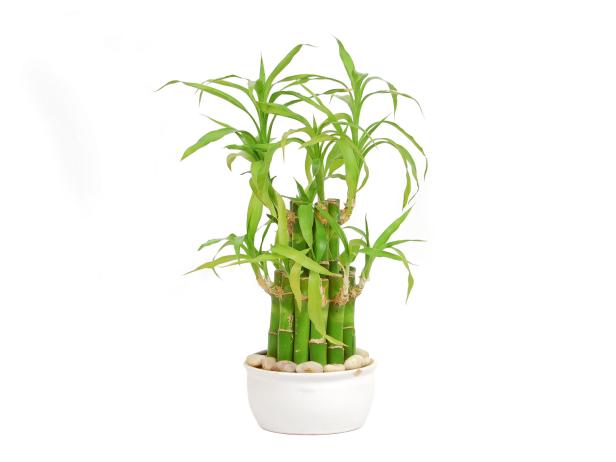
Shutterstock/Unkas Photo
To maintain its shape, remove extra shoots that grow from the stalk with a sharp knife. Bonus: Those cut-off shoots can be rooted to grow new plants. Dip the ends in rooting hormone powder and let them dry overnight, then place the shoots in water. New roots should begin to emerge before long.
30 Indoor Plants for Low Light 31 Photos
These houseplants — including bamboo — are perfect for homes and offices with little or no natural sunlight.
A final note: lucky bamboo leaves are mildly toxic, so keep them out of reach of pets or children who may nibble on them.
Taming Invasive Bamboo
First, a word of caution: Don't plant running bamboo types if you don't have a plan to contain them.
If you choose to plant running bamboo, expect that it will run out of bounds. Running bamboo spreads by underground runners, but the invading rhizomes can be terminated.
Plant the clump of bamboo on a berm. Bamboo likes loose topsoil, so when the roots reach the edge of the berm, they poke out the side and expose themselves to the open.
The rhizomes are a lot more visible that way, making it easier to spot them. Using hand pruners, cut the root tips off so they're flush with the soil surface. Scout for rhizomes two to three times from summer through fall. If you encounter large clumps of roots, cut them with a shovel.
Or, you can try a barrier.
You can try to contain bamboo at planting time by sinking strong plastic barriers around the planting area at least 30 inches deep and 3 inches above the ground to keep the roots confined. Opinions differ on whether this works.
Or, put bamboo in a container.
You can also control running bamboo by planting it in pots. Plastic containers can split in cold weather and metal and cement containers aren't good insulators from the cold. The best containers for keeping a bamboo outdoors is a very large wooden whiskey barrel.
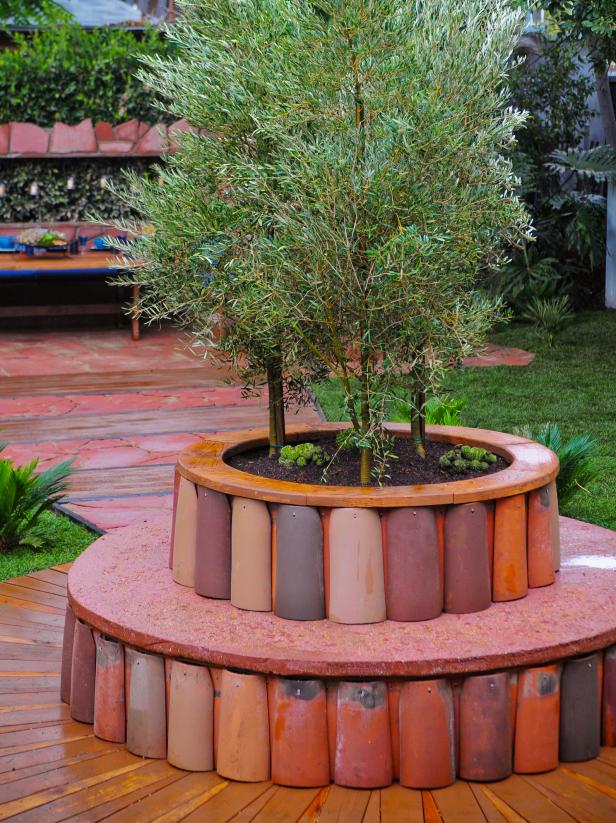
Keep in mind, if you are too timid to release clumping bamboo varieties in the garden, you can watch them for a year or two before you plant by putting them in containers.
How to Choose Bamboo
There are hundreds of species of bamboo, and what you select should be based on several factors: how you want to use it, how big you want it to get and whether you have a shady or sunny location.
Some species also have culms in striking colors — vibrant yellow, cinnamon red or glossy black, for instance — that stand out in a landscape.
Varieties of Clumping Bamboo
Fargesia sp. — The easiest of the bamboos to find and among the hardiest, members of this genus range in height from 8 to 20 feet and many are hardy at -10 to -20 degrees. Blue fountain bamboo (Fargesia nitida) grows to 12 feet and is hardy to -20. The leaves are delicate and slender, and the plant retains a vase shape. Named for its dark purple canes that are covered with a bloomy cast when young, this bamboo needs shade, and it doesn't stand up to heat. In warm areas of Zone 6 and 7, give it mostly shade, or better yet, use F. robusta and F. ruba, which have shown heat tolerance.
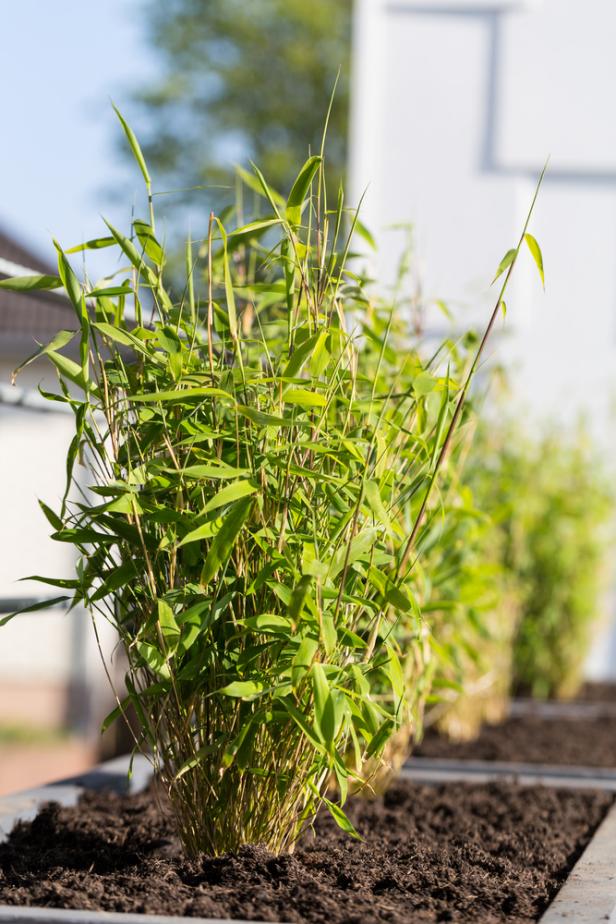
Shutterstock/wsf-s
Fargesia murielae in a flower pot.
Chusquea culeou — Cultivated in England for hundreds of years, this bamboo grows to 15 feet in height, tolerates sun or shade and is hardy from 0 to 15 degrees, depending on the clone. The canes are a wonderful mixture of green and chartreuse, a striking combination. The plant is upright, but the tops of the canes cascade and gently weep. As the clump matures, the tops sport giant feathery plumes.
Borinda angustissima — This bamboo is a tight clumper that grows to 18 feet tall, likes partial shade and is hardy to 15 degrees. It has dainty, delicate leaves and in early summer the new canes exhibit remarkable purple-red cane sheaths.
Fargesia murieliae — The culms of umbrella bamboo, a non-invasive clumping form, spread about 3 or 4 inches a year. That's all they do, so it's a very easy one to maintain. It reaches about 10 to 12 feet tall. It's hardy in Zones 4 to 9.
Taking a Chance With Running Bamboo Varieties
Pleioblastus fortunei — If you feel truly venturesome, try Pleioblastus fortunei, a runner that has variegated foliage. The spiky appearance makes it look more like an ornamental grass. It tops out at about four feet tall, and it's hardy to -10 degrees. In the spring, to get this plant going, give it a good haircut. It can take sun or shade.
Pleioblastus viridistraitus — This bamboo has chartreuse leaves striped with a handsome dark green. These will look cute and sweet in the pot, but don't forget to treat it just as you would a small lion: Don't let it out of its cage.
Phyllostachys edulis — Moso bamboo is one of the largest bamboo selections available and is used to make bamboo flooring. The culms, or stems, reach 6 inches in diameter. It grows to 80 feet tall in the right environment. Hardy in Zones 7 to 10
Phyllostachys aureosulcata 'Aureocaulis' — Golden crookstem bamboo is hardy to -10 degrees. It has an upright growth habit and reaches about 25 feet tall. The stems develop a golden yellow color and are topped off with green foliage. It spreads by underground runners. Hardy in Zones 5 to 10.
Phyllostachys bissetii — David Bisset bamboo also is a running type and grows to 30 feet tall. It has green canes that grow close together, forming a dense canopy. Hardy in Zones 6 to 10.
How to Propagate Bamboo
To easily propagate bamboo, cut the stems to about 6 inches from the ground. Remove a section of the stem with roots from the ground. Transplant the stem with roots to a container filled with soil. Leave the green end of the stem sticking above the soil, and it'll sprout up into a new bamboo in just a few weeks.






